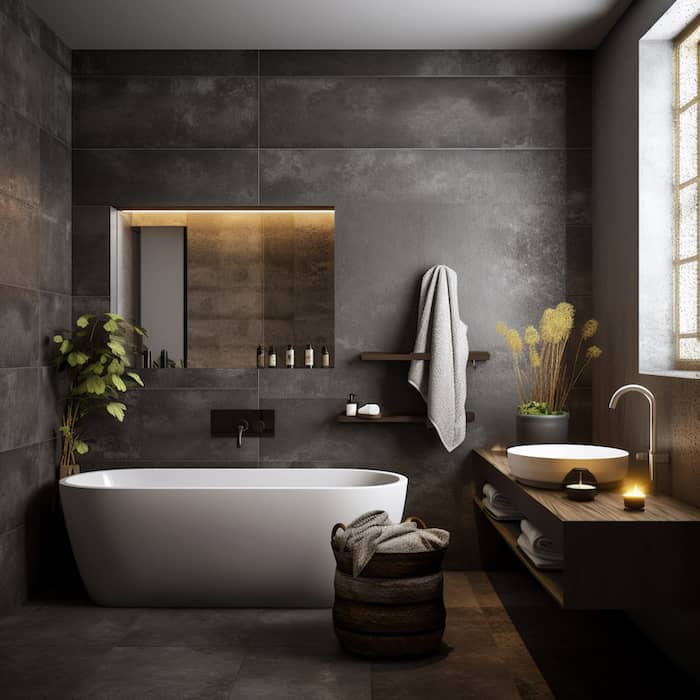Avoiding Bathroom Design Mistakes
Are you ready to embark on an exciting bathroom design and installation project? Creating a new bathroom can be both exhilarating and rewarding, provided you navigate the process wisely. To ensure that your new bathroom doesn't turn into a design disaster, it's crucial to be aware of the most common mistakes. In this article, we'll explore these mis-steps and show you how to steer clear of them for a bathroom that brings bathing bliss.
1. Failing to Think Through the Layout
Whether you have a small bathroom or ample space to work with, the layout is a critical factor in ensuring your bathroom functions effectively. Consider these key aspects:
Planning a New Space
Are you starting from scratch, or are you upgrading your current bathroom? The answer affects the layout, as updating an existing bathroom already comes with drainage and water supplies in place. In contrast, a brand-new bathroom will require extending hot and cold water supplies.
Creating a Rough Plan
To avoid layout mistakes, create a rough plan of your existing bathroom on graph paper, using metric measurements. Note the location of windows and doors. Then, create to-scale cut-out shapes of every fixture you want in the room, such as the bath, basin, toilet, and shower enclosure. Rearrange these shapes on your room plan until you find a layout that suits your needs while maximising space.
Personalising your Space
Consider how you use the space, utilise available natural light, showcase your personality, and maximise the available space. A well-designed bathroom should cater to your everyday needs efficiently.
2. Designing for the Wrong User
Designing a bathroom without considering how it will be used is a common pitfall. The needs of an adult-only ensuite differ from those of a family bathroom. Think about practical elements like storage and age-proof add-ons.
Practical Elements
For a family bathroom, prioritise hardwearing and low-maintenance features. Think about storage, anti-slip materials, and anti-scald shower valves. Ensure that the bathroom offers a flexible solution for present and future needs.
Privacy and Independence
If designing for a multigenerational family, consider privacy and independence when addressing personal hygiene needs. A double washbasin can be a smart choice if multiple people will use the bathroom.
3. Choosing the Bath You Want but don't need
While freestanding baths are luxurious, they may not be practical for smaller bathrooms. Consider alternative options like back-to-wall baths for a wow factor without requiring extra floor space. Straight baths are popular for compact spaces, while double-ended baths are perfect for bath enthusiasts.
4. Forgetting Bathroom Ventilation
Good bathroom ventilation is essential for comfort and for preventing mould growth due to moisture buildup. Install an extractor fan to ensure proper ventilation.
5. Assuming the Choice of Toilet is Purely Practical
The toilet is an important decision, both visually and practically. Consider different toilet styles, such as close-coupled toilets or contemporary wall-hung options. Ensure that your toilet choice aligns with the waste pipe's location and the available space.
6. Neglecting Window Coverings
Windows in a bathroom should offer privacy while allowing natural light. Soft fabrics are not ideal due to moisture concerns. Consider options like obscured or frosted glass, window film, thermal blinds, or shutters to maintain privacy and warmth.
7. Overlooking Great Bathroom Storage
Bathroom clutter can disrupt the relaxing ambience. Proper storage solutions, including niches, glass cabinets, and vanity units, can help keep the space organised and clutter-free.
8. Leaving Lighting Design until last
Effective lighting is essential for both practicality and ambience. Layer your lighting with background, task, and accent lighting. Avoid relying solely on a bright overhead light to create a more pleasant and adaptable atmosphere.
9. Choosing Unsuitable Flooring
Select bathroom flooring that is both practical and safe, considering frequent exposure to moisture. Porcelain tiles are hardwearing and suitable for high-traffic areas, while natural stone can provide a warm and stylish feel with proper sealing.
10. Being Unrealistic with your Budget
Budgeting is a critical aspect of any home improvement project. Be realistic about your budget and prioritize essential elements. While you may desire luxurious features, ensure that they align with your budget constraints.
In conclusion, a well-planned bathroom design can transform your space into a haven of comfort and style. By avoiding these common mistakes and focusing on good planning, you'll be well on your way to creating a bathroom that not only enhances your daily routine but also adds value to your home.

